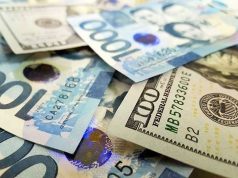Central bank eyes ‘national QR code’ for retail payments
THE BANGKO SENTRAL ng Pilipinas (BSP) will require financial firms to use a standard design for quick response (QR) codes to allow simpler transactions across service providers.
BSP Governor Nestor A. Espenilla, Jr. said they are looking to issue the guidelines for a “national QR code” within the year, which is expected to allow inter-operable retail payments in the country.
“The approach is we will issue a circular that will require the industry basically to come together and come up with a unified code and there are certain principles,” Mr. Espenilla told reporters on the sidelines of a payments and settlements conference on Friday.
QR codes are computer-generated images which are used for payments or fund transfers. The black-and-white square is usually scanned via a smartphone camera, which will then bring the user to a computer link or online payment portal to complete the transaction.
As regulator, the central bank will mandate players to sit down and agree on one QR design to be used by all. However, execution and compliance will have to go through the Philippine Payments Management, Inc., an industry-led body expected to police their own ranks.
Discussions are still ongoing, Mr. Espenilla said. Among the issues being resolved is whether or not QR payments will need their own automated clearing house (ACH) or if the technology will simply be used with a barcode reader of sorts to fast-track payment procedures using existing channels.
“There’s a live discussion right now: if it is merely an instrument for reading information, we can tap it on to Instapay. But if it is going to be a different business scheme, say, with a different fees structure, it might warrant a separate ACH,” the BSP chief said.
Launched in April, InstaPay clears electronic fund transfers worth up to P50,000 per transaction and without a daily limit. The platform is available 24/7, with the funds to be made available to receiving accounts almost immediately.
Looking ahead, Mr. Espenilla also plans to connect the QR payment platforms used here with those rolled out in Singapore and Thailand, which would be convenient for tourists and cross-border transactions.
This forms part of the BSP’s National Retail Payment System framework that seeks to spur digital payments. The goal is to raise to share of e-payments to 20% of all transactions by 2020 coming from a mere 1% share in 2013. — Melissa Luz T. Lopez



